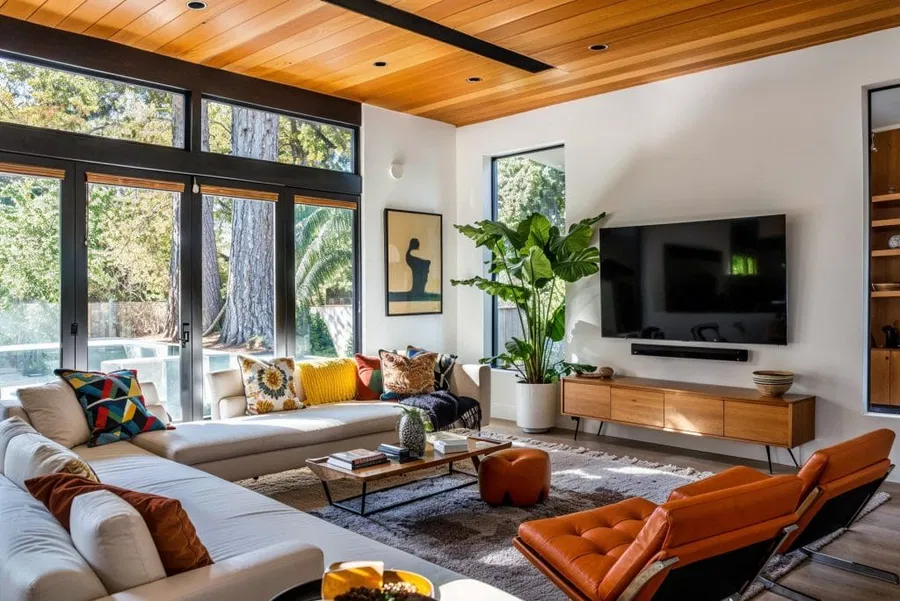Home improvement is a pursuit that many homeowners embark upon with great enthusiasm, but it’s often accompanied by the looming concern of escalating costs. Whether you’re looking to upgrade your kitchen, refresh your bathroom, or transform a tired living room, the financial burden of home renovations can quickly spiral out of control. The good news is that cost-effective home improvements don’t have to sacrifice style, quality, or design. With the right strategies and a bit of creativity, you can achieve a beautiful, functional living space while keeping costs low. The key is to embrace design principles that emphasize smart, budget-friendly choices.
1. Prioritize Strategic Design Over Expensive Materials
One of the first secrets to saving on home improvement is understanding that high-end materials are not always necessary to achieve a polished, sophisticated look. While premium finishes such as marble countertops or imported hardwood floors can add luxury, there are often more affordable alternatives that look just as good. For instance, laminate countertops have come a long way in mimicking the look of marble or granite, while engineered wood or vinyl flooring can replicate the appearance of hardwood floors at a fraction of the cost.
The principle here is to focus on the design rather than the price of individual materials. By selecting materials that provide similar visual appeal but cost significantly less, you can still create a stylish home without compromising on aesthetics.
2. Repurpose and Restore Existing Features
Before you rush into replacing old furniture, fixtures, or features, take a moment to evaluate what you already have. A well-designed home doesn’t necessarily require a complete overhaul. Repurposing and restoring existing elements can provide significant savings while maintaining character and charm.
For example, rather than replacing kitchen cabinets, consider repainting or refacing them with new hardware. Refinishing old wood floors instead of installing new ones can restore their beauty and give your space a fresh look. Even outdated light fixtures can be upgraded with a coat of spray paint or new, inexpensive shades that can make a world of difference without the need for an expensive replacement.
The key here is to be creative and think outside the box. Many items in your home have untapped potential—whether it’s sanding down and staining old furniture or giving your walls a fresh coat of paint—repurposing can provide a transformative effect with minimal cost.
3. Focus on Layout and Space Optimization
Sometimes the most cost-effective improvements come not from purchasing new items, but from altering the layout of a room. A clever redesign of your home’s layout can create the illusion of a more spacious or functional room without spending a lot on new furnishings or fixtures. Rearranging furniture to improve traffic flow, creating zones within an open-plan space, or repositioning walls to open up areas can instantly make your home feel more comfortable and efficient.
For example, in a small apartment, you might consider removing or repositioning furniture to create a more open concept, allowing more natural light to flow through the space. In larger homes, removing walls between rooms or opening up doorways can encourage a more open and inviting atmosphere. These structural changes can often be done without major renovations, saving you significant money while giving your space a complete makeover.
4. Paint: The Ultimate Low-Cost Solution
When it comes to cost-saving design tricks, few solutions can rival the transformative power of paint. A fresh coat of paint can breathe new life into a room and is one of the most affordable ways to change the look and feel of your home. Whether you’re painting your walls, cabinets, furniture, or even outdoor trim, paint offers an incredible return on investment.
Opt for neutral colors, which are timeless and can be easily complemented with a variety of furniture styles and accessories. Lighter shades can make small rooms appear larger, while bold accent walls can add personality to otherwise understated spaces. Painting your trim, doors, and cabinetry in complementary tones can also create a cohesive look throughout your home.
Additionally, consider painting older furniture pieces rather than replacing them entirely. A simple change of color or finish can revitalize your furniture, making it feel like a new piece in your home. When it comes to cost-effective home improvements, paint is an unbeatable solution that delivers major design impact for a fraction of the cost.
5. DIY Design Projects: The Power of Personalization
One of the most satisfying—and budget-friendly—ways to approach home improvement is through DIY design projects. With a little bit of time, effort, and creativity, you can create unique pieces that fit your space perfectly while saving a considerable amount on store-bought items. From creating custom shelving units to upcycling old furniture, DIY projects allow you to inject personality into your home at a fraction of the cost.
Consider building your own bookshelf, headboard, or coffee table using inexpensive materials such as plywood or reclaimed wood. Even creating your own artwork or decorative accessories can add a personal touch that elevates your decor. While DIY projects do require an investment of time, they can often save you hundreds of dollars and give your home a distinctive, personalized flair.
6. Incorporate Smart, Energy-Efficient Design Choices
Another cost-saving design secret lies in incorporating energy-efficient upgrades into your home. These improvements not only reduce your utility bills but also enhance the comfort of your home. Simple design adjustments such as installing energy-efficient windows, using LED lighting, or adding insulation can have a significant impact on long-term savings.
Even in interior design, energy efficiency can play a role. For example, choosing light-colored window treatments can help keep rooms cooler during the summer, reducing the need for air conditioning. Additionally, opting for ceiling fans can be a cost-effective solution to circulate air and maintain a comfortable temperature throughout the year.
7. Shop for Bargains and Discounts
When it comes to home decor, shopping smart can result in significant savings. Rather than paying full price for furniture and decor, look for sales, discounts, or clearance items. Thrift stores, online marketplaces, and discount retailers often offer high-quality items at a fraction of the cost.
Consider purchasing items during off-season sales, such as buying outdoor furniture during the winter or holiday decorations after the season ends. Look for second-hand or vintage pieces that can be restored or repurposed with a little creativity. Whether you’re on the hunt for unique lighting fixtures, artwork, or accent furniture, bargain shopping can be a great way to achieve high-end style at a fraction of the cost.
8. Use Natural Elements and Textures
Natural materials and textures can infuse your home with warmth and character without a hefty price tag. Wood, stone, plants, and woven textiles add layers of depth and interest to your home, helping it feel more inviting. You don’t need to invest in expensive materials to achieve a natural aesthetic—simple items like bamboo blinds, jute rugs, or stone vases can have a similar effect for much less.
Incorporating plants into your decor is another cost-effective way to bring life to your space. Not only do plants purify the air, but they also provide an organic touch that enhances your home’s design. Succulents, ferns, and low-maintenance indoor plants are affordable and versatile, adding vibrant color and texture to any room.
9. Invest in Small Accessories
While large-scale renovations can be costly, small accessories and decor items can have a big impact on the overall feel of a room. A few carefully chosen decorative pieces, such as throw pillows, area rugs, wall art, or lighting, can transform a space without breaking the bank. These elements allow you to update your decor frequently and add personality without a large investment.
Look for budget-friendly accessories that complement your existing furniture and color scheme. By strategically placing items that draw the eye, you can create a cohesive and visually pleasing environment with minimal cost.
10. Plan and Prioritize Your Projects
Perhaps the most important cost-saving secret of all is to plan and prioritize your home improvement projects. Instead of tackling everything at once, break down your renovations into manageable steps and focus on the areas that will provide the most value for your investment. Consider the long-term benefits of each project, and determine where you can achieve the greatest impact at the lowest cost.
By carefully considering your design goals and creating a realistic budget, you can avoid unnecessary expenses and make more informed decisions. Be patient with your renovations, and resist the urge to rush into costly projects that might not provide the return you expect.
Conclusion
Home improvement doesn’t have to be an expensive endeavor if you approach it with thoughtful design strategies that prioritize cost-saving elements. From smart material choices and layout optimization to DIY projects and energy-efficient upgrades, there are countless ways to enhance your home’s beauty without breaking the bank. By incorporating these cost-saving secrets into your next home improvement project, you can achieve a stylish, functional space that reflects your personality and meets your needs—without exceeding your budget. With a little creativity and strategic planning, your home can be a sanctuary that feels both luxurious and affordable.

